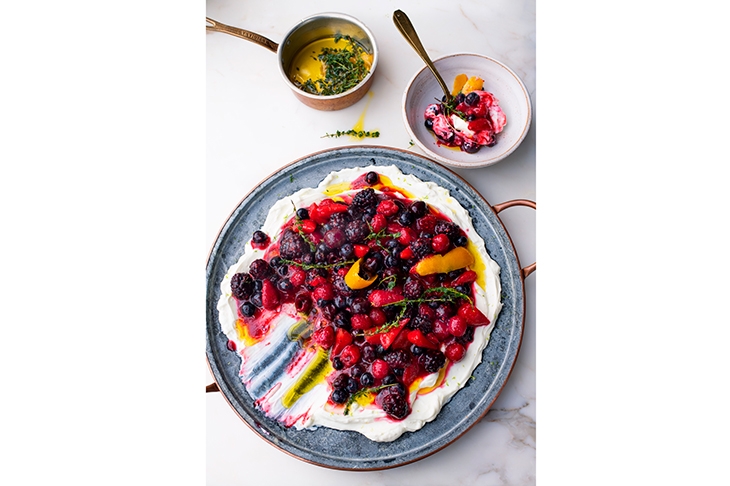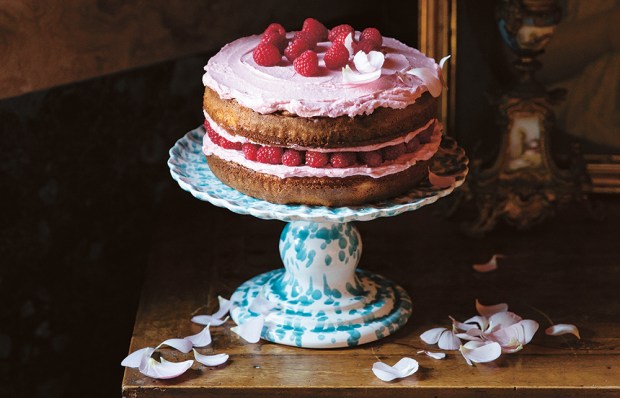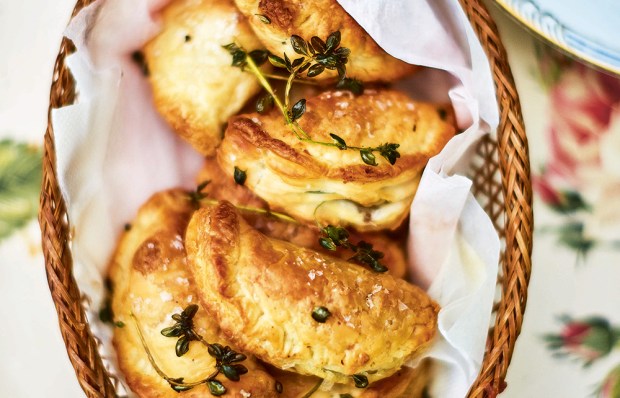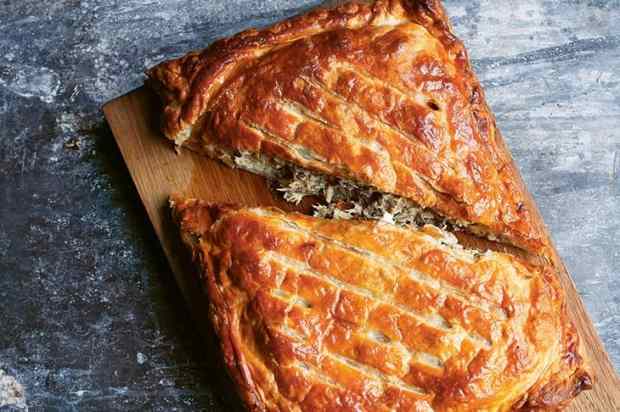In the dark days of a terrible winter, Elizabeth David began writing her first book, about Mediterranean food. The timing should have been wrong. People enduring post-war rationing would rather not think about sunlit shores and dishes of bright food, surely? But oh, how depressed, broke Britain lapped up A Book of Mediterranean Foodwhen it was published in 1950. David’s prose and recipes ‘flew’ readers to Greece, Italy, the south of France and Egypt, stirring up an appetite for garlicky seafood stews, saffron-suffused pilaffs and artichokes dipped in anchoiade.
In an echo, 70 years on, I have found my thoughts wandering to places that currently cannot be visited except via their dishes. Suggestive cookbooks still bring the sun’s rays to our table without the need for breaking quarantine. ‘Welcome, we’ve been expecting you’ goes the subtitle to Cooking in Marfa (Phaidon, £35). Virginia Lebermann and Rocky Barnette tell the story of their highly unusual restaurant, in a town in the Chihuahuan desert which spans northern Mexico and west Texas.
Marfa, in Texas, is home to a community that thrives in a location where two contentious worlds collide. Lebermann writes:
There is a bubbling tension between the old and the new, the true local and the newcomers, the cultures of the past and the cultures of the present existing simultaneously.
Having set up an art foundation in the town, she and Burnette opened the Capri restaurant. The food is Tex-Mex, of course, but very artfully so. I was inspired first to try grilled avocado guacamole (a revelation), then got on to the very serious business of making real corn tortillas. Having procured an iron tortilla press from Lakeland and nixta-malised masa (specially ground maize flour) online during the spring lockdown, I spent a messy morning with my family manufacturing the airy, silky discs, then stuffing them with either grilled fish or meat, raw herbs and sour-hot salsa. The entire project made for a delicious, vibrant day, for which we thanked this beautiful, haunting book.
Spinning the virtual globe to another well-lit location, Bill Granger’s Australian Food (Murdoch Books, £20) celebrates the all-day-café cooking he made famous. ‘What even is Australian food? Healthy, hip and possibly with a smashed avocado on top?’ asks Granger, who is credited for inventing the brunch special. It is a new cuisine, certainly. The old one went unnoticed; Granger says most people imagined his country’s traditional cooking was probably ‘like British food, only worse’. Well, now it’s all pretty bowls packed with fused flavours from almost anywhere. And, like the author, it is so amiable and sunny it is impossible not to yearn for ricotta hotcakes with honeycomb butter and banana. Or a salad dressed with peanut and lime to go beside grilled chilli miso salmon with hot and sour aubergines. Recipes that were very innovative once may be classics now, but Granger’s book, aching for home, gives Australian food the recognition it deserves.
Yotam Ottolenghi is another champion of joyfully casual cuisine. He has many successful cafés and restaurants and, as the high-profile leader of a large team, is now frequently in the news. When he last warned on the Todayprogramme how the pandemic will bring mass unemployment and bankruptcy to the UK’s hospitality sector, I raised an eyebrow, thinking how extraordinary. Seventy years ago Britain was useless at restaurants; Elizabeth David probably only knew of one decent trat in Soho. Now we are brilliant at them, and there is a morbid threat to the industry’s existence.
Many restaurants have kept their heads above water supplying takeaways, including Ottolenghi’s, though his cookbooks have always made it possible to eat his food at home. The latest, Flavour (Ebury Press, £27), written with Ixta Belfrage, shows how to intensify the taste of humble ingredients. Recipes include ‘hasselback’ beetroot with lime-leaf butter; roasted and pickled celeriac with sweet chilli dressing; and a delicate dish of lacy tempura made with leaves and stems. Stuffed with good ideas, this is a vegetarian book, but you can add a ‘side’ of meat or fish.
The London-born sisters Emily and Amy Chung became fascinated with Burmese food after qualifying as doctors. With help from their Burmese mother they opened a supper club celebrating their food heritage in the East End of London, attracting awards and neon praise. Myanmar is a country I would love to see. If not, The Rangoon Sisters Cookbook (Ebury Press, £20) by the Chungs, will at least give a little gout. Burmese food is a mishmash of many south Asian styles: noodles and curry, salads, snacks and stir-frys.
The salads are perhaps the most individual, with ingredients that are not impossible to buy. Pomelo, a pink citrus not unlike grapefruit but with a drier flesh, mixed with dried shrimps, shallot and chilli, is refreshing. Since it always seems easier to buy an unripe mango, grate it and mix with peanuts, fish sauce and palm sugar with a handful of fried shallots — a delicious salad to go beside the sisters’ recipe for fried whole fish with fragrant dressing. Helpfully, they suggest grating a Bramley apple into the salad should any mangoes evade you. Ohn no khaux swe is one of the best noodle dishes out there, with a coconut curry soup, chicken and a semi-soft boiled egg. I could eat it for breakfast, lunch and tea: food to lift the mood.
Cookbook publishing could never have planned for the events of 2020. What seemed right for a blossoming economy a year ago can now feel rather inappropriate. A book about entertaining should expressly be one to park for now. And yet Skye McAlpine’s A Table for Friends (Bloomsbury, £26) will not suffer, because her recipes work just as well for two as they do for 20. If you are not yet familiar with McAlpine’s work, she is the food writer (and photographer) for the world to watch. She is utterly dedicated to creating recipes that work, yet which are visually gorgeous and often include a sensible, sweet touch that no one has yet thought of. Can you eat tagliatelle with pears, walnuts and gorgonzola? You can if Skye thinks so. Ideas include pan-cooked sausages with sautéed red grapes, roasted pork with honey-glazed persimmon (my thanks for advice on cooking these oddities), many unusual yet easy salads and a fabulous pudding chapter packed with some astonishingly soggy cakes.
A title such as A Taste of Home (The Passage, £20, media@passage.org.uk) has an enhanced meaning when profits from its sale go to help those who have none. The Passage is a charity founded 40 years ago with the aim to end homelessness. The set up is totally practical, with a resource centre offering a number of services: a team to help rough sleepers plan their future; training for employment, to deal with debt, welfare requests — even clothing to wear for job interviews. The Passage’s fundraising cookbook, put together by the respected former publisher Kyle Cathie, combines stories about the team behind the organisation, the people it benefits and recipes from renowned chefs and celebrities. Unexpectedly — charity cookbooks can be useless — this is a truly good collection of recipes, gorgeously photographed and a genuinely moving read that feels so right for our times. The message is: cook to enjoy — but care. All profits from A Taste of Homego to The Passage.
This summary of the best cookbooks for Christmas began with talk of the Mediterranean sun. Gifting this one may spread universal warmth.
Got something to add? Join the discussion and comment below.
Get 10 issues for just $10
Subscribe to The Spectator Australia today for the next 10 magazine issues, plus full online access, for just $10.
You might disagree with half of it, but you’ll enjoy reading all of it. Try your first month for free, then just $2 a week for the remainder of your first year.














Comments
Don't miss out
Join the conversation with other Spectator Australia readers. Subscribe to leave a comment.
SUBSCRIBEAlready a subscriber? Log in